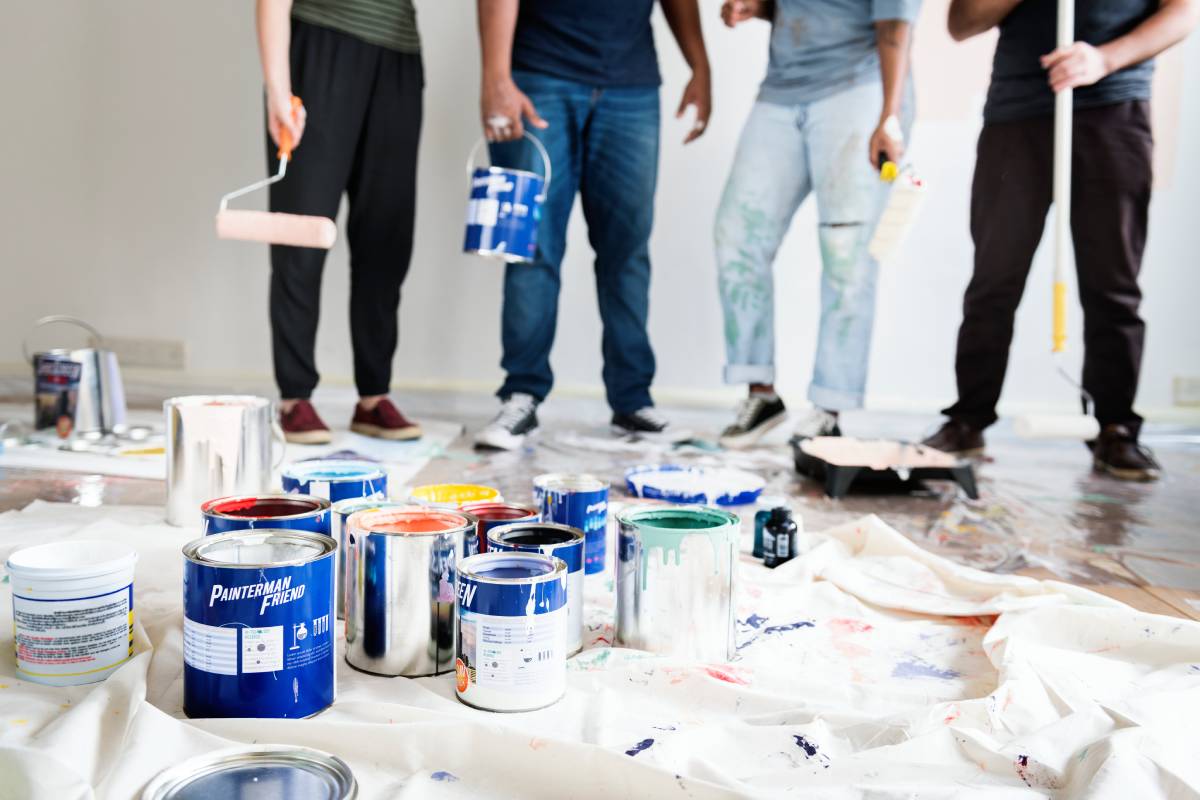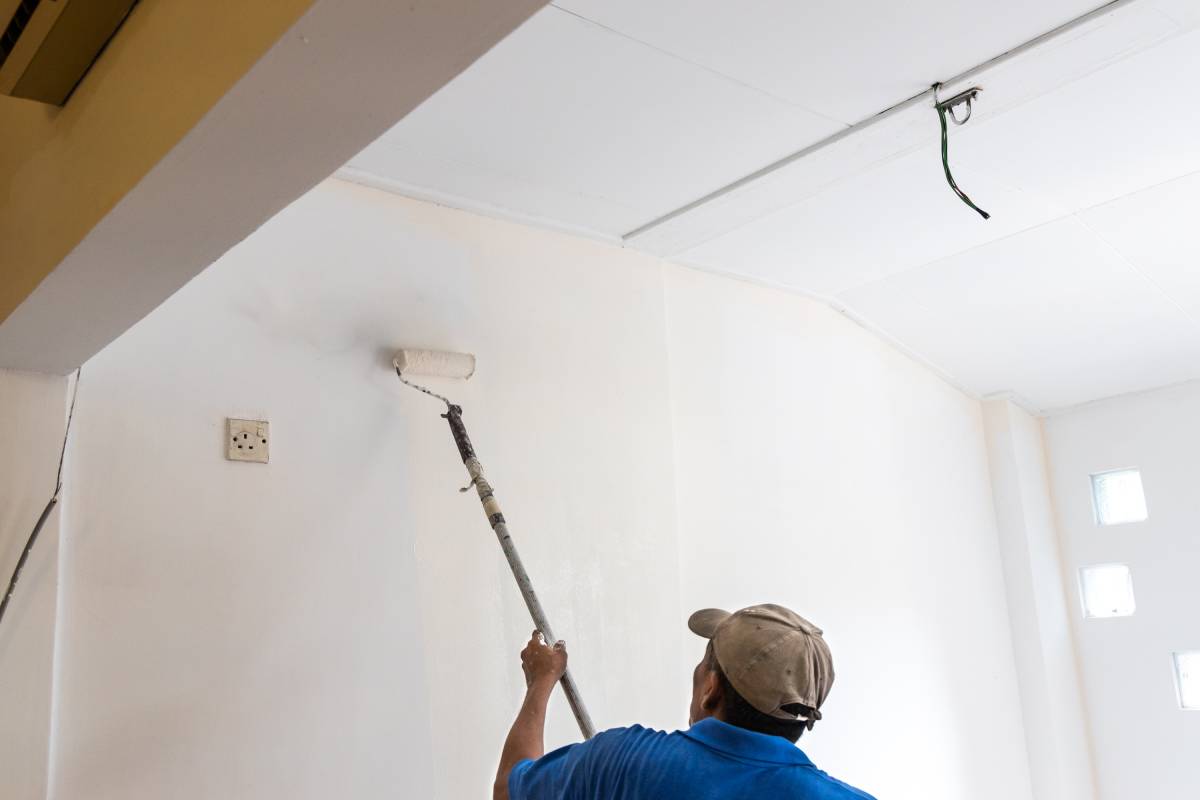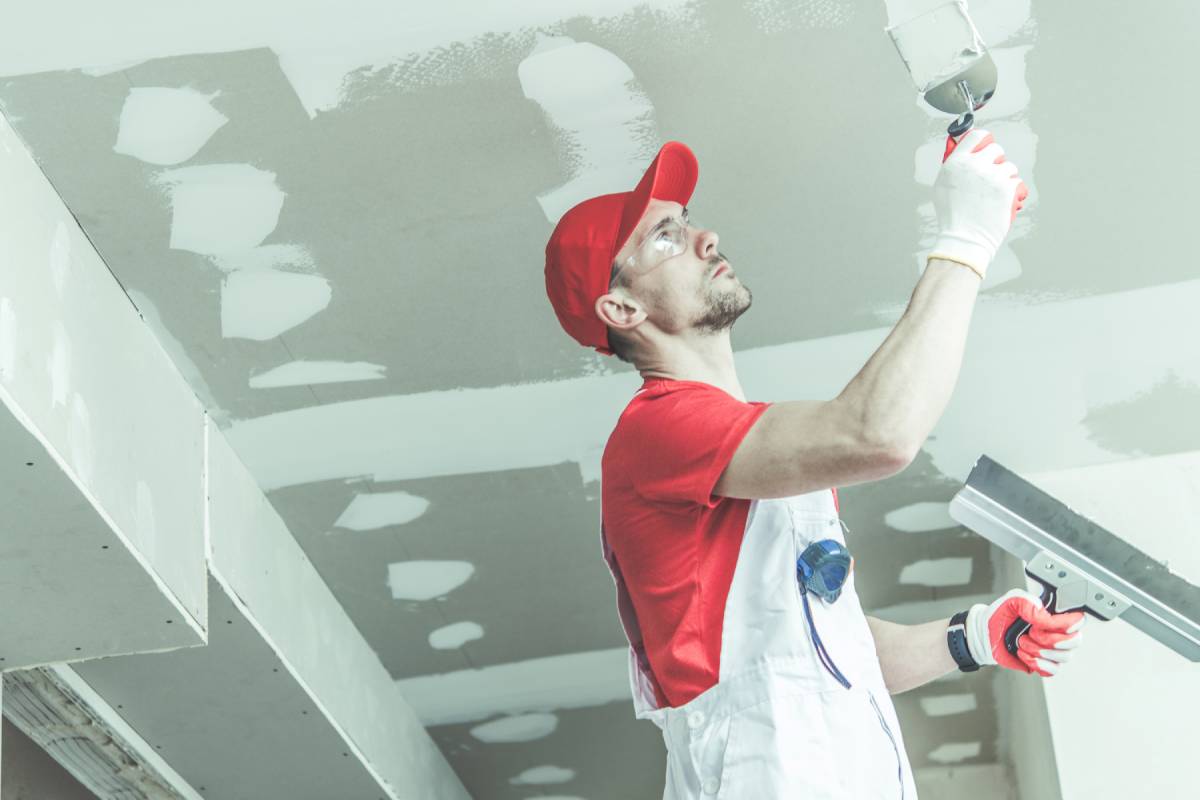Most people assume that painting your walls and ceilings at home is an easy job – but when it comes down to actually doing it, are faced with a number of unforeseen challenges. For example, should you paint the ceilings of the walls first? – A question that many people don’t bother to ask until it’s too late. Similarly, can you paint over the old paint? And how many coats of paint do you need for a perfect finish?
If you are interested in learning the answers to these questions and more, stick around and we’ll tell you what you need to know…
Should you paint ceilings or walls first? Why?
Let’s begin with the basics: should you paint your ceilings or walls first?
The general consensus among professionals is to paint the ceilings first, followed by the walls. Here’s why:
- Avoiding drips and splatters: Painting the ceilings first allows you to address any accidental drips or splatters that may (likely) occur during the process. By painting the walls after the ceilings, you can easily cover these imperfections that are bound to occur.
- Efficiency and time-saving: By starting with the ceilings, you can work from top to bottom, thus allowing the paint to dry without any disruptions from painting the walls. This approach saves you time and ultimately ensures a smoother workflow.
- Easier edge cutting: Painting the ceilings first allows for easier edge cutting along the wall-ceiling junction. You can achieve cleaner lines without having to worry about accidentally getting paint on your freshly painted walls.

Can you just paint over old paint?
What about painting over old paint? Surely you can just pick up a brush and crack on without worrying about it?
Wrong.
While it may be tempting to paint over old paint, it is generally recommended to remove the old paint first, before applying a fresh coat. Here’s why such prep-work is crucial for the overall finish:
- Adhesion: The new paint needs a clean and smooth surface to adhere properly. If the old paint is peeling, flaking, or in poor condition, for example, it can compromise the adhesion of the new paint, thus leading to premature peeling or chipping.
- Smooth and even finish: Applying new paint directly over old paint can result in an uneven finish. The texture and imperfections of the old paint may show through, affecting the overall aesthetic appearance of the room.
- Durability: Removing old paint allows you to assess the condition of the underlying surface. In doing so, you can address any issues, such as cracks or holes, and properly prepare the wall’s surface to ensure a more durable and long-lasting paint job.
Don’t waste your time and get the prep work done.

How many coats of paint should you put on a ceiling and walls?
The number of coats of paint required for ceilings and walls depends on various factors, including the colour, the type of paint, and the condition of the target surface itself. However, as a general guideline:
- Ceilings: Ceilings typically require two coats of paint for a solid and uniformed finish. Applying two coats ensures proper coverage – especially if you’re transitioning from a darker to a lighter colour.
- Walls: Walls generally require two coats of paint as well, as a minimum. However, if you’re painting over a significantly different colour or if the surface is porous, you may need an additional coat to achieve full coverage and colour consistency. Take it slow and you should be able to identify easily enough whether a third coat is necessary.
- Primer: In some cases, using a primer before applying the paint can be beneficial. A primer helps with adhesion, covers stains, and allows the paint to adhere better, especially on surfaces such as bare drywall or previously unpainted walls.
Is it better to DIY your home painting needs or hire the professionals?
Finally, is it easy enough to DIY your home painting requirements or should you do away with the hassle and hard work and hire the pros instead? Here are some pros and cons to consider:
DIY Home Painting:
- Cost savings: DIY painting can save money on labour costs as you only need to invest in the necessary tools, paint, and supplies.
- Flexibility and control: Doing it yourself allows you to have complete control over the project, from colour selection to the timeline.
- Learning experience: DIY painting can be a learning experience and a chance to develop new skills.
- Time and effort: Painting can be time-consuming and physically demanding. It requires proper preparation, attention to detail, and patience – if you want a perfect finish, that is.

Hiring the Professionals:
- Quality and expertise: Professionals have the knowledge, experience, and tools to deliver high-quality results. They can handle complex projects, provide advice on colour selection, and ensure a flawless finish.
- Time savings: Hiring professionals saves you time and effort. They are equipped to complete the job efficiently, thus allowing you to focus on other tasks or enjoy your free time with friends and family.
- Warranty and guarantees: Many professional painters offer warranties or guarantees on their work, giving you peace of mind that you’ll get the best possible results (or your money back).
- Cost: Hiring professionals can be more expensive due to labour costs, especially for larger projects (e.g., a whole house interior and exterior).
- Communication and coordination: Working with professionals requires effective communication and coordination to ensure that your expectations are met.
Ultimately, we would always recommend hiring the professionals – especially if you don’t have much in the way of DIY experience. Painting your house can get messy and is incredibly time-consuming. The last thing you want is to burn yourself out because you are working a full-time job, raising a family, and trying to paint the entirety of your home on a tight schedule.
Conclusion
And that’s about all you need to know! Here’s a quick recap:
- Always paint the ceiling first as you are bound to get splashes on the walls (which can then be painted over).
- As a rule of thumb, both ceilings and walls typically require at least two coats of paint (with walls sometimes needing one or two more depending on the situation).
While there are many cost-saving benefits to DIY house painting, the pros of hiring the professionals are much more attractive – especially when you invest in a reputable and established company like Painting All Sorts near Central Coast.







